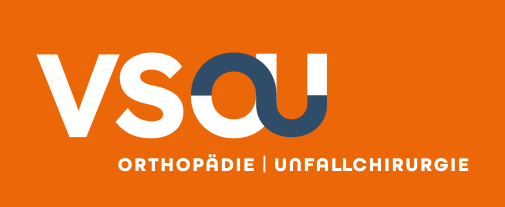Übersichtsarbeiten - OUP 01/2015
31. Fakler JK, Ozkurtul O, Josten C, Retrospective analysis of incidental non-trauma associated findings in severely injured patients identified by whole-body spiral CT scans. Patient Saf Surg, 2014; 8: 36
32. Huber-Wagner S, Lefering R, Qvick LM et al. Effect of whole-body CT during trauma resuscitation on survival: A retrospective, multicentre study. Lancet, 2009. 373: 1455–61
33. Caputo ND, Stahmer C, Lim G, Shah K, Whole-body computed tomographic scanning leads to better survival as opposed to selective scanning in trauma patients: A systematic review and meta-analysis. J Trauma Acute Care Surg, 2014. 77: 534–9
34. Hajibandeh S, Hajibandeh S. Systematic review: effect of whole-body computed tomography on mortality in trauma patients. J Inj Violence Res, 2014; in press
35. Kam CW, Lai CH, Lam SK, So EL, Lau CL, Cheung KH, What are the ten new commandments in severe polytrauma management? World J Emerg Med, 2010; 1: 85–92
36. Saltzherr TP, Bakker FC, Beenen LF, Dijkgraaf MG, Reitsma JB, Goslings JC, Randomized clinical trial comparing the effect of computed tomography in the trauma room versus the radiology department on injury outcomes. Br J Surg, 2012; 99 Suppl 1: 105–13
37. Huber-Wagner S, Mand C, Ruchholtz S, et al. Effect of the localisation of the CT scanner during trauma resuscitation on survival-A retrospective, multicentre study. Injury, 2014; 45 Suppl 3: S76–82
38. Anderiesz C, Elwood JM, McAvoy BR, Kenny LM, Whole-body computed tomography screening: looking for trouble? Med J Aust, 2004; 181: 295–6
39. Ruchholtz S, Waydhas C, Schroeder T, Piepenbrink K, Kuhl H, Nast-Kolb D. The value of computed tomography in the early treatment of seriously injured patients. Chirurg, 2002. 73: 1005–12
40. Brenner DJ, Elliston CD, Estimated radiation risks potentially associated with full-body CT screening. Radiology, 2004; 232: 735–8
41. Heyer CM, G. Rduch, Kagel T et al. Prospective randomized trial of a modified standard multislice CT protocol for the evaluation of multiple trauma patients. Rofo, 2005; 177: 242–9
42. Wedegartner U, Lorenzen M, Nagel HD, Weber C, Adam G, Diagnostic imaging in polytrauma: comparison of radiation exposure from whole-body MSCT and conventional radiography with organ-specific CT. Rofo, 2004; 176: 1039–44
43. Tien HC, Tremblay LN, Rizoli SB et al. Radiation exposure from diagnostic imaging in severely injured trauma patients. J Trauma, 2007. 62: 151–6
44. Umweltradioaktivität und Strahlenbelastung im Jahr 2012 : Unterrichtung durch die Bundesregierung, in: Parlamentsbericht 2012, Bundesamt für Strahlenschutz (BfS)
45. Fanucci, E, Fiaschetti V, Rotili A, Floris R, Simonetti G. Whole body 16-row multislice CT in emergency room: effects of different protocols on scanning time, image quality and radiation exposure. Emerg Radiol, 2007; 13: 251–7
46. Ptak T, Rhea JT, Novelline RA. Radiation dose is reduced with a single-pass whole-body multi-detector row CT trauma protocol compared with a conventional segmented method: initial experience. Radiology 2003; 229: 902–5
47. Hara AK, Paden RG, Silva AC, Kujak JL, Lawder HJ, Pavlicek W. Iterative reconstruction technique for reducing body radiation dose at CT: feasibility study. AJR Am J Roentgenol, 2009. 193: 764–71
48. Martinsen AC, Saether HK, Hol PK, Olsen DR, Skaane P. Iterative reconstruction reduces abdominal CT dose. Eur J Radiol, 2012; 81: 1483–7
49. Noel PB, Renger B, Fiebich M et al. Does iterative reconstruction lower CT radiation dose: evaluation of 15,000 examinations. PLoS One 2013; 8: e81141
50. Loewenhardt B, Buhl A, Gries CA et al. Radiation exposure in whole-body computed tomography of multiple trauma patients: bearing devices and patient positioning. Injury, 2012 43: 67–72
51. Siebers C, Stegmaier J, Kirchhoff Cet al. Analysis of failure modes in multislice computed tomography during primary trauma survey. Rofo 2008; 180: 733–9
52. Siebers C, Huber-Wagner S, Ivanova N, Jacob B, Heindl B, Kanz KG. Emergency room management of severely injured patients – Analysis of avoidable deviations from the treatment algorithm. Anaesthesist 2009; 58): 1216–1222
53. Prokop A, Hotte H, Kruger K, Rehm KE, Isenberg J, Schiffer G. Multislice CT in diagnostic work-up of polytrauma. Unfallchirurg, 2006. 109: 545–50
54. Wurmb TE, Quaisser C, Balling H et al. Whole-body multislice computed tomography (MSCT) improves trauma care in patients requiring surgery after multiple trauma. Emerg Med J, 2011. 28: 300–4
55. Smith, C.M. and S. Mason, The use of whole-body CT for trauma patients: survey of UK emergency departments. Emerg Med J, 2012. 29(8): p. 630–4.
56. Sierink JC, Saltzherr TP, Reitsma JB, Van Delden OM, Luitse JS, Goslings JC, Systematic review and meta-analysis of immediate total-body computed tomography compared with selective radiological imaging of injured patients. Br J Surg, 2012; 99 Suppl 1: 52–8
57. Riepl C, Junghanns A, Gebhard F, Kraus M. Reduced emergency room time for trauma patients by integrated CT. Z Orthop Unfall 2013; 151: 168–72
58. Adiotomre A, Chopra A, Kirwadi A, Kotnis N, Results from the first year as a major trauma radiology unit in the UK. Clin Radiol, 2014; 69: 812–21
59. Maurer MH, Knopke S, and Schroder RJ, Added diagnostic benefit of 16-row whole-body spiral CT in patients with multiple trauma differentiated by region and injury severity according to the ATLS concept. Rofo 2008; 180: 1117–23
